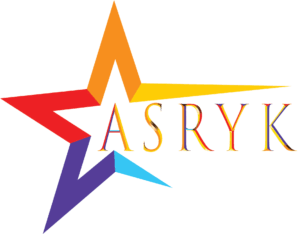Glue AI: Building Bridges in the Developer Ecosystem with AI
The developer landscape is constantly evolving. New tools and frameworks emerge at a rapid pace, each promising to streamline the development process. However, this abundance can also lead to fragmentation, making it difficult for developers to connect different applications and leverage their combined power. This is where Glue AI steps in, aiming to bridge the gap between disparate tools with the power of artificial intelligence.
A Toolbox for Developers: What is Glue AI?
Glue AI is a platform designed to empower developers by providing a suite of tools to connect their applications seamlessly. It acts as a central hub, integrating with various APIs and services using artificial intelligence to facilitate communication and data exchange. This allows developers to build complex workflows and applications without needing to write extensive code for each integration.
At the heart of Glue AI lies its ability to leverage large language models (LLMs) like OpenAI’s GPT-4 or Anthropic’s Claude 3. These powerful AI models can understand natural language instructions and translate them into actionable steps, allowing developers to interact with Glue using plain English commands. This significantly reduces the learning curve for new users and empowers even non-programmers to build basic integrations.
Key Features of Glue AI
- AI-powered Integration: Glue AI’s core strength is its ability to simplify application integration. Developers can connect their applications using natural language commands, eliminating the need for complex code. Glue translates these commands into API calls and manages the data flow between applications.
- Pre-built Connectors: Glue offers a growing library of pre-built connectors for popular APIs and services, saving developers time and effort. These connectors handle the specifics of each API, allowing developers to focus on building their applications without worrying about underlying protocols.
- Customizable Workflows: Glue allows developers to build complex workflows by chaining together different connectors and actions. This enables them to automate repetitive tasks and build powerful integrations that would be difficult to achieve with traditional methods.
- Developer-friendly Interface: Glue provides a user-friendly interface for developers to manage their integrations and workflows. This includes a visual editor for building workflows, as well as detailed logs and monitoring tools to track the performance of integrations.
- Open API and SDK: Developers can leverage Glue’s open API and Software Development Kit (SDK) to extend its functionality and integrate it with their own custom tools and applications.
Benefits of Using Glue AI
- Increased Productivity: By simplifying application integration, Glue AI allows developers to focus on building core functionalities rather than spending time on complex coding for each integration. This significantly improves developer productivity and accelerates the development process.
- Reduced Development Costs: Glue eliminates the need for writing custom code for every integration, leading to reduced development costs. Additionally, its pre-built connectors remove the need for developers to spend time learning and understanding individual APIs.
- Improved Application Interoperability: Glue promotes interoperability between different applications by enabling seamless data exchange. This allows developers to build applications that leverage the strengths of multiple tools, creating a more cohesive development ecosystem.
- Lowered Barrier to Entry: Glue’s user-friendly interface and natural language interaction make it accessible to developers of all skill levels. This lowers the barrier to entry for building complex integrations, empowering even fewer technical users to contribute to the development process.
Use Cases for Glue AI
Glue AI finds application across various development scenarios. Here are a few examples:
- Automating Data Pipelines: Glue can automate the transfer of data between different applications, such as moving data from a CRM system to a marketing automation platform.
- Building Custom Workflows: Developers can utilize Glue to build complex workflows that involve multiple applications and services. This can be used to automate tasks like onboarding new customers, generating reports, or triggering actions based on specific events.
- Integrating Legacy Systems: Glue bridges the gap between modern applications and legacy systems, allowing developers to leverage existing data and functionalities without needing to rewrite entire systems.
- Enhancing Collaboration: Glue facilitates collaboration between developers by providing a central platform to manage integrations and workflows. This fosters a more streamlined development process and improves team communication.

The Future of Glue AI and Developer Tools
The use of AI in developer tools is still in its nascent stage, but Glue AI represents a significant step forward. As AI models continue to evolve and become more sophisticated, Glue’s capabilities will expand significantly. We can expect to see features like:
- Automated API Discovery: Glue could automatically discover available APIs and services within a developer’s environment, suggesting potential integrations and simplifying the connection process.
- Intelligent Error Handling: Glue could leverage AI to diagnose and resolve integration issues automatically, reducing troubleshooting time for developers.
- Context-aware Recommendations: Based on the developer’s current task and code, Glue could suggest relevant integrations and workflows, further streamlining the development experience.
Conclusion
Glue AI presents a compelling vision for the future of application development. By leveraging the power of artificial intelligence, Glue empowers developers to build complex integrations and workflows with ease. This not only improves developer productivity but also fosters a more connected and collaborative development ecosystem. As AI continues to evolve, Glue AI has the potential to become an indispensable tool for developers of all skill levels.
Challenges and Considerations
However, the adoption of Glue AI and similar AI-powered developer tools comes with certain challenges and considerations:
- Security Concerns: Integrating multiple applications raises security concerns. Glue AI needs to ensure secure data transmission and access control mechanisms to protect sensitive information.
- Vendor lock-in: Overreliance on a single platform for integrations could lead to vendor lock-in. Developers should carefully evaluate the platform’s openness and the availability of alternative solutions.
- AI Explainability and Trust: As AI plays a more significant role in development, understanding how AI models make decisions becomes crucial. Glue AI should strive for transparency in its decision-making processes to build trust with developers.
- Evolving Developer Landscape: The developer landscape is constantly changing, with new tools and frameworks emerging regularly. Glue AI needs to maintain a robust and up-to-date library of connectors to stay relevant.
The Road Ahead
Despite these challenges, the potential benefits of AI-powered developer tools like Glue AI are undeniable. As AI continues to develop, we can expect to see even more innovative solutions emerge, transforming the development landscape and empowering developers to build more powerful and interconnected applications. Here are some key areas to watch in the future:
- Focus on Developer Experience: AI should be used to enhance the developer experience, not replace developers entirely. Tools like Glue should focus on making developers more efficient and productive, not automating them out of the loop.
- Integration with Cloud-native Development: Glue AI can play a crucial role in cloud-native development environments, seamlessly connecting various cloud services and promoting a more agile development approach.
- democratization of development: By lowering the barrier to entry for integrations, AI-powered tools can democratize development, allowing even non-programmers to contribute to building applications.
In conclusion, Glue AI represents a significant step forward in bridging the gap between disparate tools in the developer ecosystem. As AI continues to evolve, Glue AI and similar solutions have the potential to revolutionize the way developers build applications, leading to a more efficient, collaborative, and innovative development landscape.



